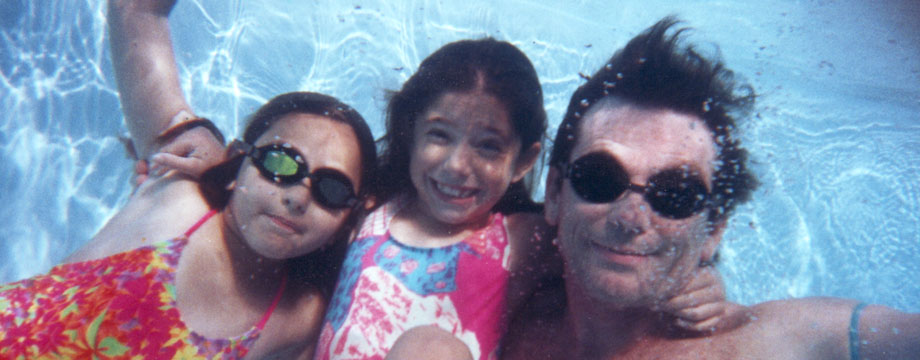I’m always on the lookout for good instructional material for teaching swimming. You have probably seen small babies (1-2 yrs.) that can be tossed (or fall) into deep water and manage to recover so they can swim to safety or calmly float. How did they train these babies to become “waterproof” or “water-safe”?
Esther Williams was a champion swimmer. She peaked around 1940 and would have been in the Olympics, but the Olympics were cancelled due to the start of WWII. She became a huge movie star in films that featured her beautiful swimming and diving. In 1984 she produced and starred in an instructional video, “Swim Baby, Swim.” I had high hopes that this 1984 video (out of print) would “unlock” the secrets of teaching babies to swim. Boy was I wrong!
The most glaring problem is an omission…
In the “5 steps” from the video, somehow the baby goes from being held up in the pool to being able to recover from a push or fall into deep water, with clothes on! Unfortunately, over the course of the 45 minute video, Ms. Williams does not show how you teach a child to rollover onto her back and then, do a calm back float. Somehow, the baby knows!?
Cheap Vinyl floats mean Danger!
The 2nd problem is her advocacy of using cheap vinyl blow-up float tubes for non-swimmers. These tubes are fragile–easily punctured by rubbing against the pool, fingernails, etc. and are very slippery, which makes it easy for a small child to just drop through and get into serious trouble very quickly.
There are many good instructional videos for teaching babies and toddlers, but this isn’t one of them. Not only is it incomplete, but it contains bad information. Any floatation device used by a non-swimmer should have U.S. Coast Guard approval, and should fit the person properly.

